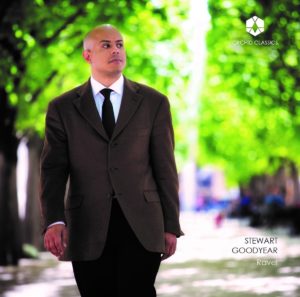Listeners familiar with the strong linear profile characterizing Stewart Goodyear’s Beethoven sonata recordings will find comparable clarity throughout the Ravel interpretations offered here. In Goodyear’s hands, Jeux d’eau represents sculpted classicism rather than shimmering impressionism, as does the Sonatine’s Menuet. With that in mind, you might be surprised at the curvy phrases in the Sonatine’s first movement, which hardly prepare you for the Finale’s forceful urgency.
Goodyear’s Miroirs doesn’t quite match Herbert Schuch for breathtaking nuance and timbral refinement, yet there are glorious moments, such as Une barque sur l’ocean’s stunning textural differentiation, and the variety in touch, emphasis, and speed with which Goodyear treats Alborada del grazioso’s arpeggiated chords (his elegantly tossed-off repeated notes will keep many a pianist humble!).
Goodyear approaches Gaspard de la nuit from the perspective of a supreme virtuoso and a serious composer. For example, he doesn’t pound out Ondine’s basic ostinato pattern as a four-beat-to-the-bar phrase, but rightly feels it in “in two”, while the pianist is one of the few on disc to play the climactic contrary motion arpeggios at something close to the original tempo; most pianists broaden this passage following the big ritard leading into it. The effect is electrifying.
In Le Gibet, Goodyear manages to convey the seemingly contradictory qualities of mobility and patient unfolding, and projects an appropriately desolate atmosphere over the melody restatement in bars 28 through 34 that Ravel marks “sans expression”. In an era in which pianists tend to treat Scarbo as an Olympic hurdle, where faster and still faster is the norm, Goodyear’s less flashy yet highly disciplined and intelligently paced performance may well be an act of courage, although some of his chord playing could be softer and more supple. By contrast, it takes a real artist to play the Pavane straight , without exaggerating detail, and making interpretive points through voicing and touch alone. In this regard Goodyear’s reading is close to ideal. In short, Goodyear’s best Ravel playing sheds new light on familiar fare, and that’s a major achievement.
































